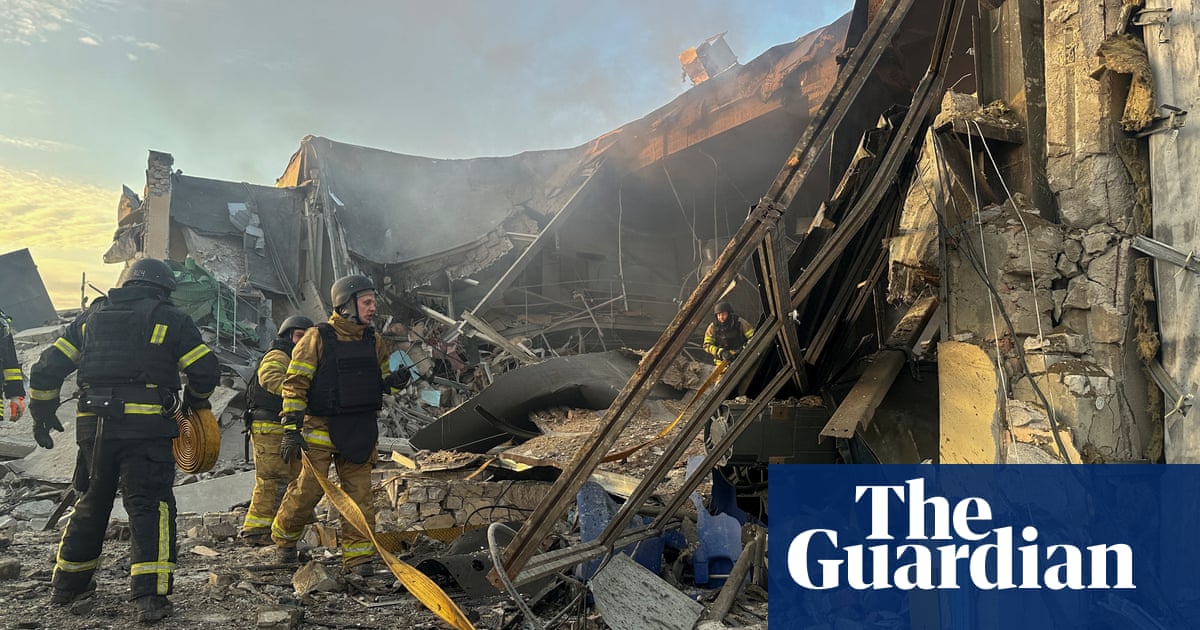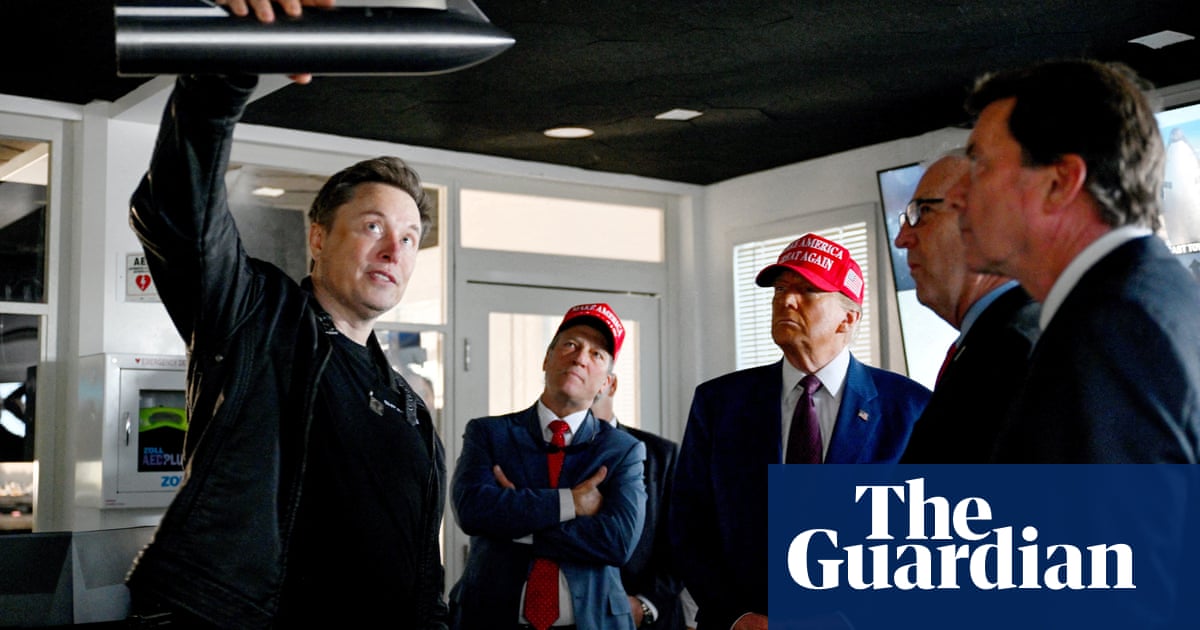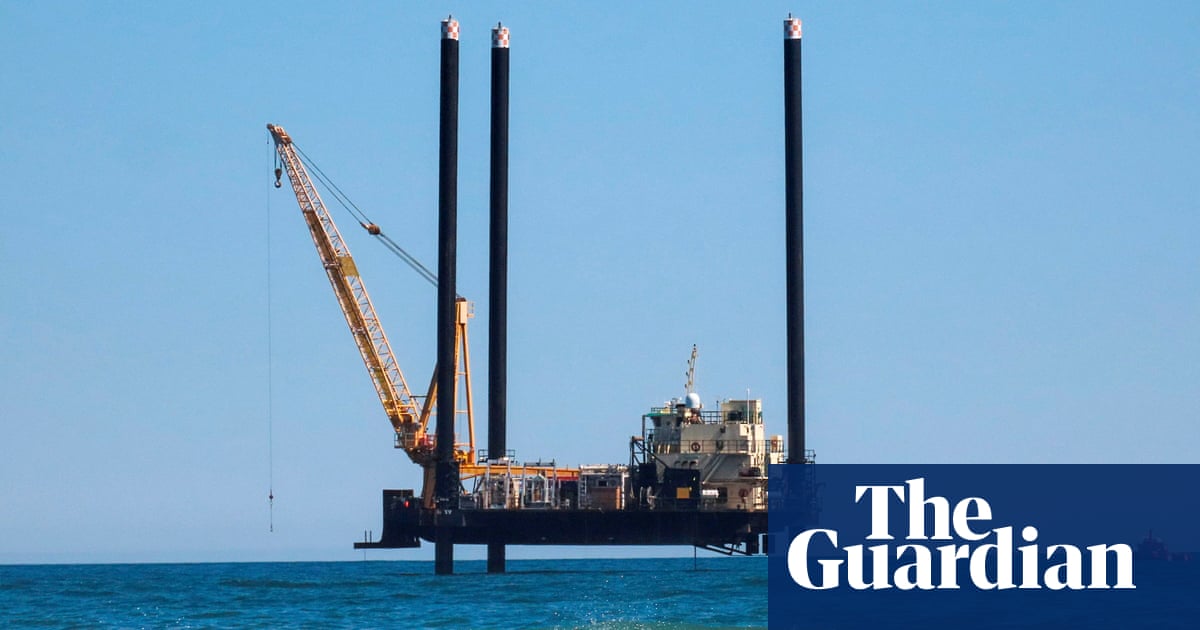
One afternoon in February, hoping to survive the apocalypse or at least avoid finding myself among its earliest victims, I logged on to an online course entitled Ruggedize Your Life: The Basics.
Some of my classmates had activated their cameras. I scrolled through the little windows, noting the alarmed faces, downcast in cold laptop light. There were dozens of us on the call, including a geophysicist, an actor, a retired financial adviser and a civil engineer. We all looked worried, and rightly so. The issue formerly known as climate change was now a polycrisis called climate collapse. H1N1 was busily jumping from birds to cows to people. And with each passing day, as Donald Trump went about gleefully dismantling state capacity, the promise of a competent government response to the next hurricane, wildfire, flood, pandemic, drought, mudslide, heatwave, financial meltdown, hailstorm or other calamity receded further from view.
Our two-hour live video session was taught by Alex Steffen, a 56-year-old author, speaker, podcaster and “foresight consultant”, who was addressing us from his home in the Bay Area.
For many years, Steffen worked as an environmental reporter. He wrote several acclaimed books that explored technological solutions to the climate crisis, served as “futurist in residence” at the design firm IDEO, and taped a couple Ted Talks, gradually gaining a reputation as one of the foremost thinkers on the sustainability circuit. Meanwhile, he watched in horror as the window for action narrowed and governments and institutions dithered. “I still find it staggering and heart-rending that we blew this so badly,” he said in an interview.
Having eventually concluded that the worst consequences of a heating climate had become inevitable, Steffen made a pivot. He now advises individuals, as well as businesses and localities, on how to gird themselves for impact. Interest in his classes and one-on-one consultations had roughly doubled every year since 2021, he said, and he expected 2,000 participants this year.
Steffen bucks the image of the prototypical end times prepper, most of whom are creatures of the right. Emerging in the 1950s, preppers were animated by a variety of often overlapping fears: some were troubled by the increasingly networked, and therefore fragile, nature of contemporary life. Others perceived a divine warning in biblical references to the Tribulation, the ultimate scriptural nightmare fuel. Still others, alarmed by the superpower brinkmanship of the cold war, sought a refuge from nuclear annihilation. Finally, there was the widespread conviction that the turbulence of the 1960s presaged a full-blown civil war. Kurt Saxon, the author often credited with inventing the term “survivalist” in the mid-1970s, had been a member of the American Nazi party and the John Birch Society, and the need to guard against a vaguely racialized horde animates some of his writings.
Originally known as “retreaters” (a term Saxon rejected due to its association with weakness), early adopters of what we now think of as the prepper philosophy went off-grid; hoarded provisions, firearms and ammunition, and sometimes constructed hidden bunkers. They championed individual fortitude over collective welfare. Wary of being vilified as violent crackpots (not to mention one day finding a throng of desperate neighbors banging on their steel-reinforced concrete door), many kept their hobby secret. As a result, researchers have long struggled to quantify the movement’s reach.
Prepperism took a reputational hit in the 1990s, when it was linked with the militia movement, along with incidents such as the deadly standoffs at Ruby Ridge and Waco and the Oklahoma City bombing. But it re-emerged with renewed force after 9/11, the first assault by a foreign adversary on the US homeland in decades. Among the many casualties of the World Trade Center attack was Americans’ long-unquestioned sense of safety. In 2005, after Hurricane Katrina decimated New Orleans, George W Bush’s assertion that his Fema director was “doing a heck of a job” – even as thousands of storm refugees huddled in the Superdome without food or water – seemed to validate a central pillar of the prepper ethos: relying on government was the height of folly.

In the ensuing years, the philosophy went mainstream, fueling radio shows and YouTube channels as well as an ecosystem of regional conventions and wilderness survival trainings. Meanwhile, Americans began devouring survival-oriented programming, from Lost and The Walking Dead to Doomsday Preppers and Naked and Afraid, which played to our darkest eschatological nightmares. Though accurate demographic figures on preppers remain elusive, surveys taken after the worst of the Covid pandemic suggest that more than 20 million Americans are now taking steps to prepare for cataclysm – assembling go-bags and stocking up on food, water and first aid supplies – more than double the estimated number in 2017.
Not all of them are conservatives. Liberals make up about 15% of the prepping scene, according to one estimate, and their numbers appear to be growing.
One private Facebook group dedicated to preparedness for liberals has more than tripled in size since the election. Here, one finds no tradwife panegyrics, gun porn or “TEOTWAWKI” (the End of the World as We Know It) merch. Instead, participants offer advice on maintaining one’s online anonymity under a potential fascist regime, advocate the stockpiling of anxiety meds and reading material (ahead of expected bans), and debate the moral dilemma of buying a first aid kit from a company that caters to law enforcement. Liberal preparedness podcasters and newsletter writers I spoke to also reported a notable uptick in subscribers since Trump’s election.
Liberal preppers differ from their rightwing counterparts because the calamities they anticipate have different characteristics. Rightwing bugbears like civil unrest and globalist tyranny lead to a focus on the stockpiling of weapons to defend one’s property and family from hostile adversaries. But concerns about global heating point to different notions of readiness. Climate breakdown – the destabilization of the entire ecological system on which our lives depend – is not a fleeting crisis one can ride out with a well-stocked arsenal and a few pallets from Costco. As Margaret Killjoy, who launched the prominent anarchist-prepper podcast Live Like the World Is Dying at the beginning of the Covid pandemic, put it: “There’s not much preparedness you can do for the end of the world.”
While Steffen, who considers himself “moderately progressive”, believes it’s only prudent to have a reserve of basic items – water, food, medical supplies and the like – on hand in case of emergencies, his approach to preparedness differs markedly from the version promoted on the right. “I would put to you that if you find yourself in a situation where you’re having to let off some rounds to protect your canned goods, you’ve already failed,” he told our class. “You have not understood the assignment.”
Eric Shonkwiler, author of the When/If newsletter, which focuses on prepperism with a leftist spin, agreed. “The first time this guy in his Maga hat falls down the stairs and breaks his leg and it gets gangrenous and neither him nor anyone in his family are doctors, he’s done,” Shonkwiler predicted. “And that’s a month into the apocalypse, and all of his guns did nothing for him.”
For Steffen and other preppers on the left, threat analysis begins with an understanding of network effects: how various social and economic systems work together to support our ongoing survival, or undermine it. Bald and bespectacled, with headphone wires dangling from his ears, he explained that the effects of climate collapse will be experienced as a series of localized disasters – flooding here, wildfire there – each requiring planning and forethought.
“Every piece of infrastructure, every home, every community, every business, every industry, was built to work in a world that no longer exists,” he told us, adding that this ever-widening gap will be “ripping through every single person’s life”.
Steffen’s prescription was “ruggedization”, a term borrowed from the military. Ruggedization, he explained, was “the design of a system such that it can take unexpected punishment and retain its core functions”. Its opposite he termed brittleness – “the condition of a thing being subject to sudden failure”. Our primary goal ahead of climate chaos was to recognize brittleness in the systems around us – from failing infrastructure to political ineptitude – and either remedy it or avoid it altogether.
Steffen shared a map on the screen of the US Climate Vulnerability Index, which is operated by the Environmental Defense Fund and Texas A&M University, and noted that some places would be harder hit than others. “If I lived there,” he told the class, referring to the Gulf and the south-eastern coast, exceptionally high-risk areas, “I would already be thinking about how to get out.” Extreme heat will make much of the Sun belt inhospitable as well, and if the Atlantic meridional ocean current, or Amoc, collapses, as some models predict, New England could soon look more like Siberia.
As the reality of climate collapse hits home, those with the means to do so will beeline for safer locales, Steffen predicted. (Though is anywhere really safe? Sleepy Duluth, Minnesota, for example, had been identified as an especially attractive destination before a “generational storm” associated with warmer temperatures destroyed 100,000 acres of forest around the city and knocked out power for tens of thousands of residents in the area.) “Some very smart people believe it is going to be the largest human migration in history,” he said. While his $149 introductory course is short on specifics, he also offers a more detailed 12-hour Crash Course in Personal Ruggedization, as well as individual consultations.
For some on the left, steeped in the mutual aid framework of the anarchist philosopher Peter Kropotkin, Steffen’s vision of migratory musical chairs smacks of the all-against-all gospel of the right. “Not everybody can do that,” Shonkwiler said of relocating, calling it “a ridiculous solution”.

Steffen is all too aware uprooting is far from ideal even for those who can afford it. For one thing, it will tend to weaken the family and community ties that help keep us safe. Moreover, he noted that the exodus of people with money, resources and skills from endangered areas would tend to amplify the crisis for those left behind.
Then again, nobody said the apocalypse would be pretty.
Killjoy, who lives in rural West Virginia, thinks her identity as a trans woman may have contributed to her interest in preparedness. “Queer people have always had to look out for each other,” she said. Which highlights another important way in which liberal prepperism differs from the rightwing version: a rejection of individualism and an emphasis on community building and mutual aid. When Hurricane Helene hit, Killjoy, who had previously lived in western North Carolina, loaded her stash of dry goods, water jugs and solar generators into a van and drove to the hard-hit area to help out her former neighbors.
The typical survivalist fantasy of isolating oneself in an off-grid cabin deep in the woods is unlikely to offer much protection, Steffen said. “Most people who try to use distance as their means of providing safety don’t succeed,” he said. “We still have this idea that we can just move out into the middle of rural Kentucky, put up some solar panels, drill a well, and we’re good, but it’s really not that easy. You can learn those skills, but you’re still going to have to work really hard on physical tasks compared to people who have common infrastructure that they’re sharing.”
Elizabeth Doerr, co-host of the Cramming for the Apocalypse podcast, agreed: “Researchers talk a lot about how your ability to survive a disaster or thrive post-disaster is contingent on really knowing your neighbors – because when they don’t see you, they’re gonna come check on you.”
The vast majority, Steffen believes, would be safer in urban settings – especially cities that are taking the threats seriously and developing resilience plans. “You are better off choosing to move towards systems that are used by a lot of people,” he told us. He admitted the idea may sound counterintuitive; a steady diet of zombie movies have taught many of us to associate proximity to other people with increased peril. “But the more people who are using the same set of infrastructure, the more money you have to keep those things well repaired and the more easily you can devote resources to it.”
Another distinctive characteristic of liberal prepperism is an increasing focus on the emotional and even spiritual aspect of facing catastrophe. Given the damage we’ve already done to the atmosphere and the alarming lack of collective will to address the issue, those seeking to prepare have begun talking about what acceptance looks like.
For them, the question is less whether we survive than how we maintain our humanity in the face of calamity, how we cope with loss, and how we use the time we have.
David Baum spent years volunteering for the Community Emergency Response Team in Seattle. But when he learned how much of the preparedness budget had been earmarked for police equipment – “you know, armored trucks and weapons and handcuffs and sound cannons” – he began to question an approach to crisis response more suited to violent repression than communal wellbeing. He changed course after encountering the influential academic paper Deep Adaptation: A Map for Navigating Climate Tragedy by Jem Bendell, a professor of sustainability leadership and one-time darling of Davos, who has come to believe that our addiction to fossil fuels will soon bring about the destruction of civilization.
After participating in online forums devoted to Bendell’s thinking, Baum started his own group. Three times a week, he and several colleagues host free online meetups where participants from around the world assemble to talk through their emotional responses to the prospect of human extinction. They call it Collapse Club.
I participated in one session, and came away persuaded that genuine prepping requires not only “outer resilience”, as Baum puts it, but an inner kind as well.
“Survival is not the goal,” he told me afterward. “It is impossible, given what’s happening. The relationship and the wisdom and the love that one discovers by approaching nature with respect – that’s the goal.”
Despite his dismal prognosis, Baum is no doomer. “Even though it’s a global collapse we’re talking about, it really is possible in the company of others to metabolize these feelings and find stability in your life,” he promised. “You can imagine new ways to live, and you can find a purpose to go on.”
Or as Bendell put it in his 2023 book Breaking Together: “Humanity is really screwed, so let’s slow down, help each other, be nicer to animals and nature, defend freedom, grow food, play more, be open-minded about what might help, and forgive ourselves.”
For the last few years, Bendell told me in an email, he has done exactly that. He quit his full professorship, moved to Indonesia, and launched a school to teach sustainable agricultural practices to local farmers.
He is under no illusion that the small, volunteer effort will have any real impact on a global crisis. And by no means would he refer to it as prepping. Rather than an effort to defend himself and his adopted community against a nightmare future, it’s a part of a commitment to living meaningfully in the present. “I know we could get washed away next week,” he wrote in a blogpost not long ago. “Or we could run out of money next year. Or we could get shut down due to a bureaucratic hitch. But it would still have been great for a time.”

 German (DE)
German (DE)  English (US)
English (US)  Spanish (ES)
Spanish (ES)  French (FR)
French (FR)  Hindi (IN)
Hindi (IN)  Italian (IT)
Italian (IT)  Russian (RU)
Russian (RU)  1 day ago
1 day ago
























Comments